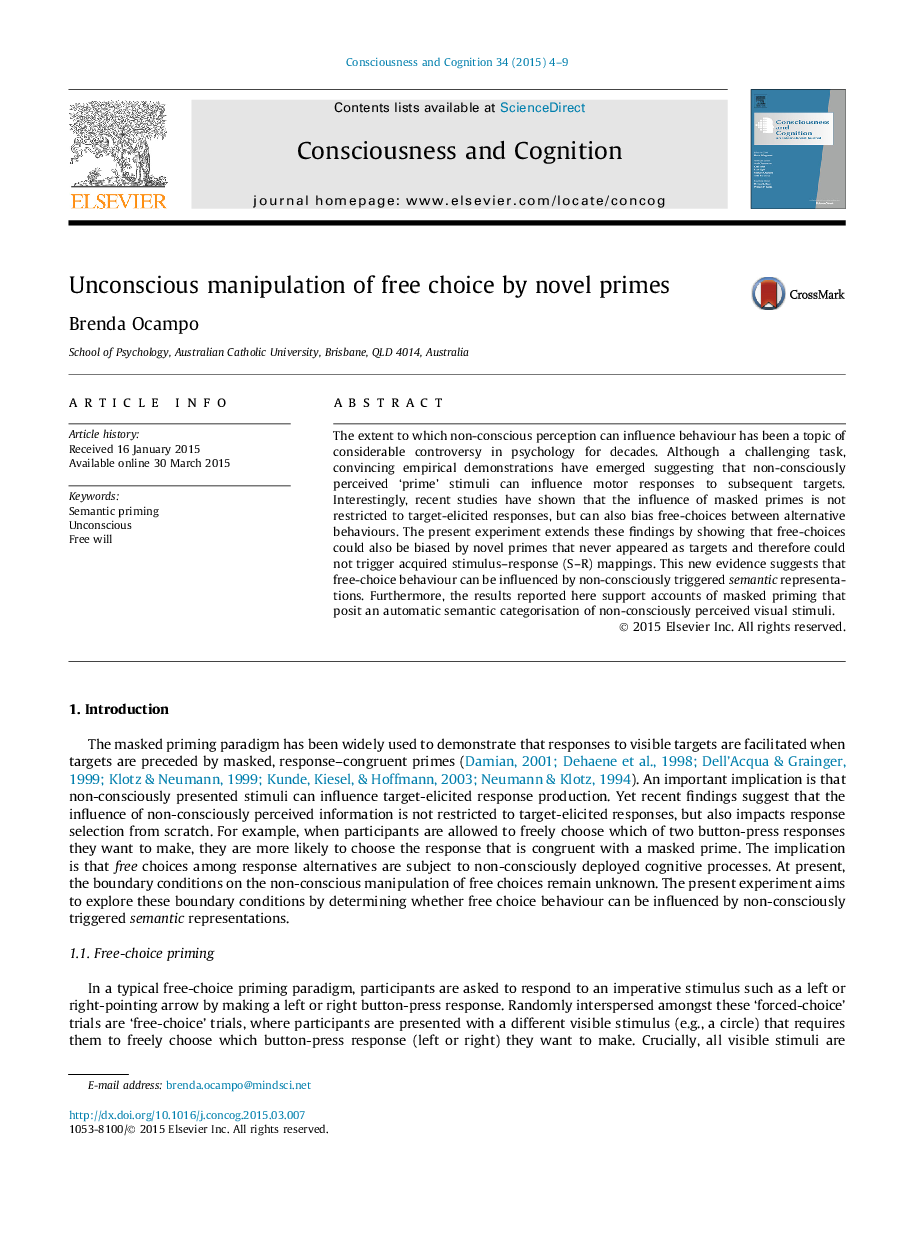| Article ID | Journal | Published Year | Pages | File Type |
|---|---|---|---|---|
| 927558 | Consciousness and Cognition | 2015 | 6 Pages |
•Masked primes have been shown to influence free choices.•This may depend on the availability of acquired stimulus–response links.•Here novel primes that never appeared as targets preceded free-choice targets.•Apparently ‘free’ choices were influenced by unseen novel primes.•Non-conscious semantic representations may thus influence free choice behaviour.
The extent to which non-conscious perception can influence behaviour has been a topic of considerable controversy in psychology for decades. Although a challenging task, convincing empirical demonstrations have emerged suggesting that non-consciously perceived ‘prime’ stimuli can influence motor responses to subsequent targets. Interestingly, recent studies have shown that the influence of masked primes is not restricted to target-elicited responses, but can also bias free-choices between alternative behaviours. The present experiment extends these findings by showing that free-choices could also be biased by novel primes that never appeared as targets and therefore could not trigger acquired stimulus–response (S–R) mappings. This new evidence suggests that free-choice behaviour can be influenced by non-consciously triggered semantic representations. Furthermore, the results reported here support accounts of masked priming that posit an automatic semantic categorisation of non-consciously perceived visual stimuli.
